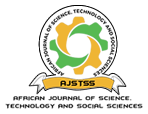A Health-Related Quality of Life: differences between Human-Wildlife Interface and Non- Wildlife Zones of Meru County, Kenya
DOI:
https://doi.org/10.58506/ajstss.v2i2.130Keywords:
EQ-5D-5L, HRQoL, Human-Wildlife Interface, Non-Human-Wildlife ZonesAbstract
Background: Emerging infectious diseases (EIDs) of animal origin are increasing. Research, collaboration and surveillance on population health as per the WHO definition of health through one health is necessary to prevent these zoonoses. Comparison of Health Related Quality of Life (HRQoL) between residents at the human-wildlife interfaces and non-wildlife zones can identitify health inequalities for action. We compared the HRQoL of such areas in Meru County, Kenya.
Methods: Data were simultaneously collected using the European Quality of Life Five Dimension, Five Level questionnaire (EQ-5D-5L) in Igembe Central and Tigania West Sub-counties. Associations between the HRQoL variables and the hypothesis were tested through chi statistic and odds ratio respectively.
Results: Participants largely reported no problems in the dimensions of EQ-5D-5L. However, the HRQoL significantly differed between the two populations. Populations at the brink of Meru National Park reported more problems in the worry (anxiety/depression) dimension of the EQ-5D-5L than their counterparts in Tigania West.
Conclusions: Further studies are required to address the cause of anxiety/depression to improve population mental health around the Park.


